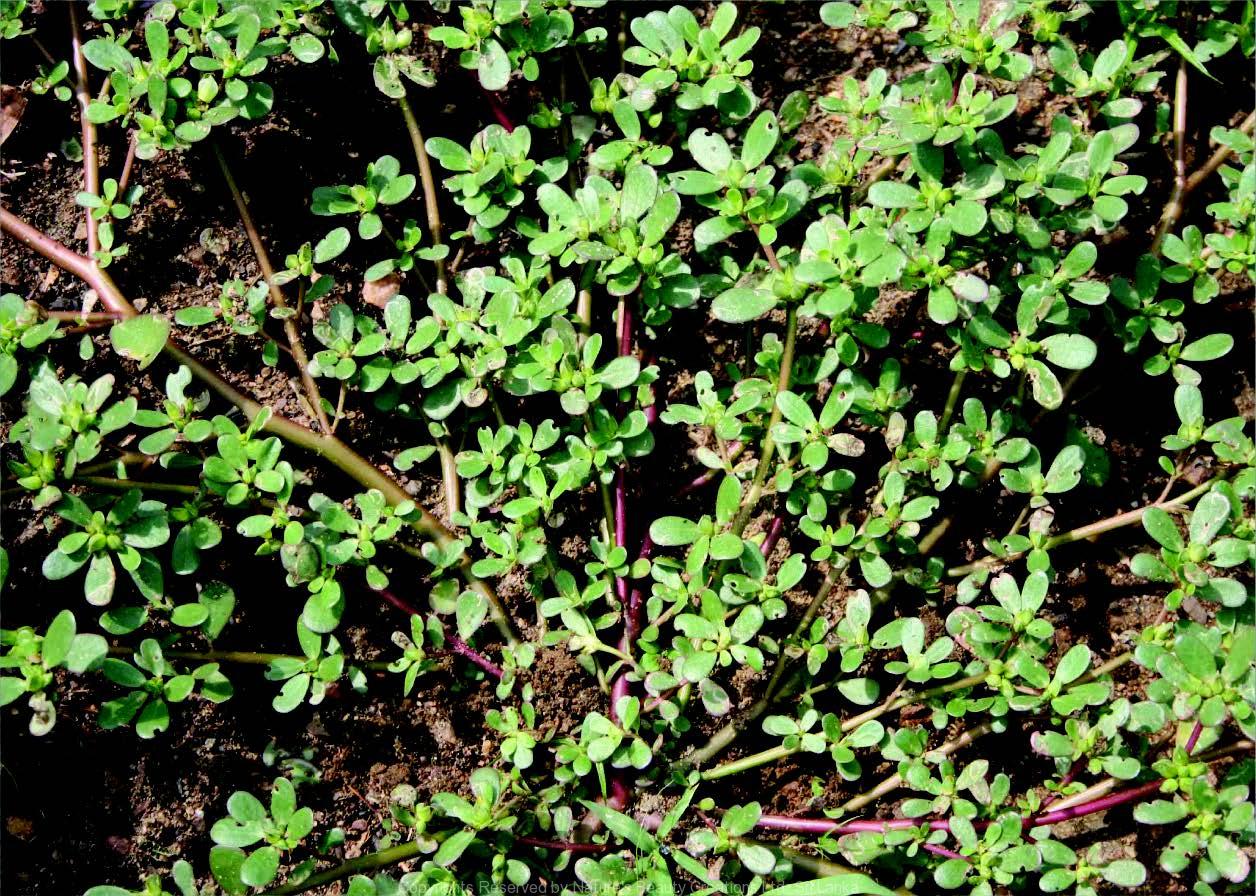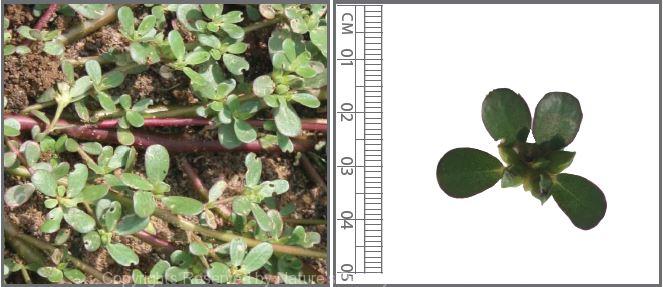

Traditional Knowledge
Useful plant parts :
Leaf and seed
Uses in traditional medicine :
- Leaves prepared as a curry is taken as a liver tonic
- Fresh leaf juice is applied to cure skin diseases
- Leaves are diuretic, sedative and dysenteric and are used to treat gastric diseases
- Seeds are stomachic, emollient, sudorific, antiscorbutic and are used to treat internal ulceration of stomach, haemoptysis, snake bites, pulmonary and skin diseases
Scientific Research
Chemical constituents:
Alkaloids: oleraceins A–E, monoterpene glucoside: portuloside A, catecholamines: dopamine, noradrenaline, flavonoids: kaempferol, apigenin, myricetin, quercetin, luteolin, portulacanones A–D and acidic, pectic and neutral polysaccharides from plant
Bioactivity :
Aqueous extract of plant: skeletal muscle relaxant, aqueous, ethanol extract of aerial parts: analgesic anti-inflammatory, antimicrobial; crushed aerial parts: wound healing; methanol extract of soft upper stems of plant and leaves: antioxidative; pectic polysaccharides: antiviral against HSV -2
Clinical:
Seeds are effective as adjuvant therapy for type II diabetes
References :
Chan, K. et al., (2000), The analgesic and anti-inflammatory effects of Portulaca oleracea L. subsp. Sativa (Haw.) Celak, Journal of Ethnophar- macology, 73, 445–451.
Dong, C. X. et al., (2010), Haracterization of structures and antiviral effects of polysaccharides from Portulaca oleracea L., Chem Pharm Bull (Tokyo), 58(4), 507-10.
El-Sayed, M. I. et al., (2011), Effects of Portulaca oleracea L. seeds in treatment of type-2 diabetes mellitus patients as adjunctive and alternative therapy, J Ethnopharmacol, 137(1), 643-51.
Feng, P. C. et al., (1961), High concentration of (-)-Noradrenaline in Portulaca Oleracea L., Nature, 191, 1108.
Lim, Y. Y. and Quah, E. P. L., (2007), Antioxidant properties of different cultivars of Portulaca oleracea, Food Chemistry, 103(3), 734–740.
Londonkar, R. and Nayaka, H. B., (2011), Phytochemical and Antimicro- bial Activities of Portulaca Oleracea L., Journal of Pharmacy Research, 4(10), 3553-3555.
Okwuasabaa, F. et al., (1986), Skeletal muscle relaxant properties of the aqueous extract of Portulaca oleracea, Journal of Ethnopharmacology, 17, 139-160.
Piatteli, M. and Minale, L., (1964), Pigments of centrospermae-II, distribution of betacyanins, Phytochemistry, 3, 547-557.
Rashed, A. N. et al., (2003), Simple evaluation of the wound healing activity of a crude extract of Portulaca oleracea L. (growing in Jordan) in Mus musculus JVI-1, Journal of Ethnopharmacology, 88(2-3), 131–136.
Sakai, N. et al., (1996), Portuloside a, a monoterpene glucoside from Portulaca olerace, Phytochemistrv, 42(6), 1625-1628.
Weng, Q. et al., (2005), Determination of dopamine and norepinephrine in Portulaca oleracea L. by micellar electrokinetic capillary chromatogra- phy with amperometric detection, Se Pu, 23(1), 18-21.
Xiang, L. et al., (2005), Alkaloids from Portulaca oleracea L., Phytochem- istry, 66, 2595–2601.
Xu, X. et al., (2006), Determination of flavonoids in Portulaca oleracea L. by capillary electrophoresis with electrochemical detection, Journal of Pharmaceutical and Biomedical Analysis, 41(2), 493–499
Yan, J. et al., (2012), Homoisoflavonoids from the medicinal plant Portulaca oleracea, Phytochemistry, 80, 37-41.
Copyrights Reserved By
Natures Beauty Creations




